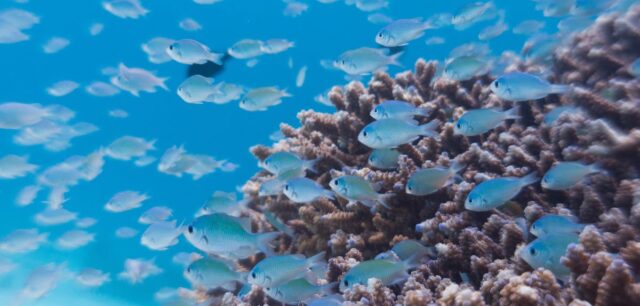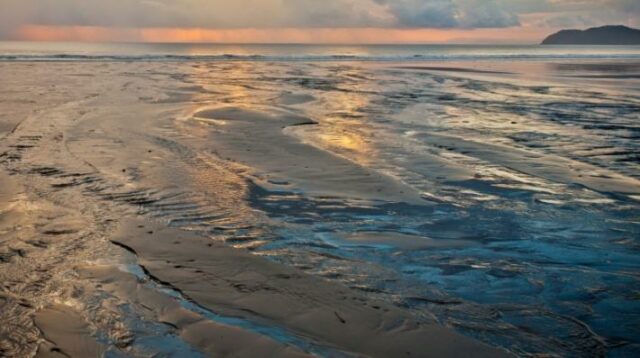
Costa Rica has added more than 11,000 square kilometers to its marine conservation map over the last decade, thus making progress in settling a historical debt with its oceanic biodiversity.
During that time, the country created four marine management areas: Montes Submarinos, Cabo Blanco, Bahía Santa Elena, and Barra Del Colorado, with which it reached a total of 2.7% of the marine territory under some category of protection.
That figure is far from international commitment, which was 10%, but it is an important step for the country to pay off a historic debt it has with marine conservation.
“Costa Rica is a country that is 10 times larger in its marine territory than terrestrial; we are truly more comparable to an island than many other countries. And all conservation efforts have been directed towards this goal(…) That is why the country is now preparing its exclusive economic zone, to understand where it should direct its efforts”, said the executive director of the Costa Rica Forever Association, Zdenka Piskulich.
The association, dedicated to promoting the conservation of marine and terrestrial ecosystems in perpetuity, through the management of alliances with the government, the private sector, and civil society, has been one of the entities in charge of providing support to the country to meet the national conservation goals.
The ocean in general acts as a regulator of the planet’s climate, and these 11,000 more kilometers of marine protected areas in addition to protecting the biodiversity of migratory birds, cetaceans, turtles, fish, and corals, promote sustainable development of communities.
“These protected areas are fundamental because they become climatic shelters, not only for biodiversity but to the extent that the ecosystem is healthy it has the capacity for resilience and adaptation to climate change and that overflows towards a benefit to the communities, to the economic and social welfare, it is a whole chain”, biologist Mónica Gamboa explains.
Each of these areas has special and unique characteristics, which reflect its great ecosystem value and were chosen after a rigorous process that involved technical studies, investment, consultation with the communities, and accompanying management so that it is in a sustainable protected area over time.
Historical debt
Costa Rica has had a historical debt with marine protection. Despite its richness in marine environments, the country lags in the conservation and management of marine and coastal biodiversity, especially when compared to its efforts towards the terrestrial part.
This was highlighted by the report Cranes II on an analysis of conservation gaps, which highlights the main threats such as pollution, unplanned development of coastal infrastructure, unregulated navigation, and unreported or unregulated illegal extraction of marine resources.
Costa Rica has only 51,100 square kilometers of land territory – 0.03% of the world’s surface – and is home to around 90,000 species, approximately 5% of global biodiversity. In its land and insular area, it protects a total of 13,030.55 square kilometers, for 25.5%, its goal is to reach 30%.
This species richness is reinforced by its marine and coastal diversity. The country has 568,054 square kilometers of total marine surface (92% is the sea) in which 6,700 marine species have been identified – 3.5% of the marine species reported globally – of which 90 are endemic. Of the marine areas, 15,501.92 square kilometers are protected, 2.7%, far from the 10% that was the international commitment to 2020.
However, now the country’s goals are more ambitious and it seeks to form an international bloc to ensure that 30% of the terrestrial and maritime territories of the planet are protected by the year 2030, as a solution based on nature to fight against the climate crisis.
Characteristics of marine areas

The Montes Submarinos marine management area is an oceanic mountain range located next to Coco Island that has connectivity with the Galapagos Islands. It has highly migratory species with great ecological value such as sharks, mantas, and cetaceans. Also, species of commercial interest for industrial fishing such as tuna, dorado, sailfish, among others.
For its part, the Cabo Blanco marine area, on the Nicoya peninsula, is characterized by its coral and rocky reefs, it brings together a lot of marine life since the continental shelf falls rapidly and there are deep waters very close to the coast, which allows whale and dolphin observation. It also has sea turtle nesting beaches under its protection.
Santa Elena Bay, in the North Pacific, also has coral reefs, with species such as black coral-difficult to observe-, and adds historical value for its rock formations that are the oldest in the country.
In the case of Barra del Colorado, in the northern Caribbean, it is identified by its coastal lagoons and channels, very particular to the area. It is protected by a high concentration of migratory birds, the nesting of sea turtles, some mammals such as sperm whales and manatees, as well as tarpon, a species valued in sport fishing.
“All areas are accompanied by a local training process, business and management plans, use of fishing resources and that combination, hand in hand with the communities, are the recipes for success that can now be emulated by other countries. We may not have reached 30% conservation, but what we are protecting and are doing well and that is what we as a country can truly showcase to the world biodiversity,” Piskulich said.
Some of the coastal communities were traditionally focused on fisheries, which today are overexploited. For this reason, the authorities sought to promote a governance system, which includes the creation of family inns, internet access, ecotourism, support for marine tour operators, as well as applying fishing with less invasive activities that allow the ecosystem to recover.

